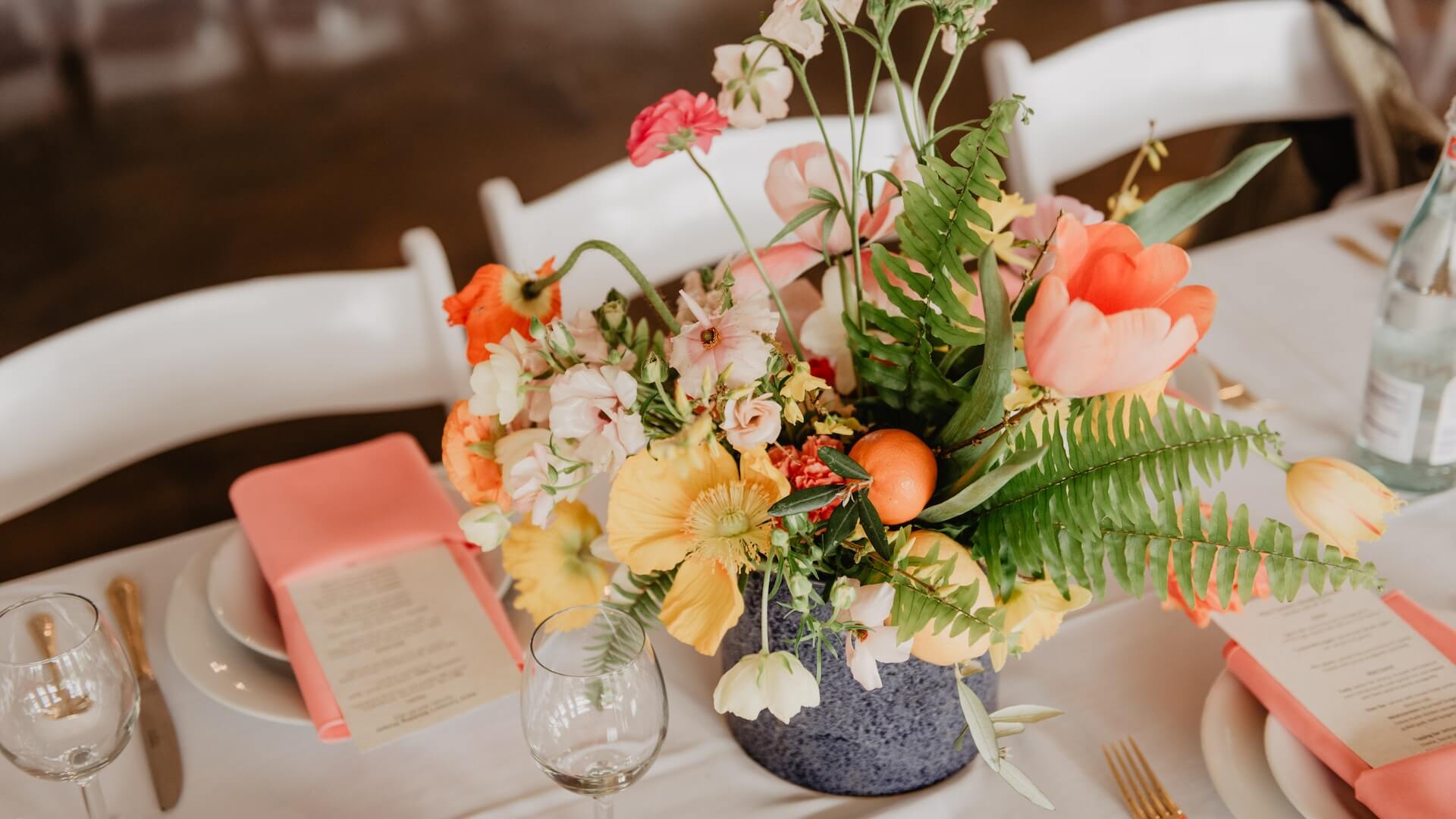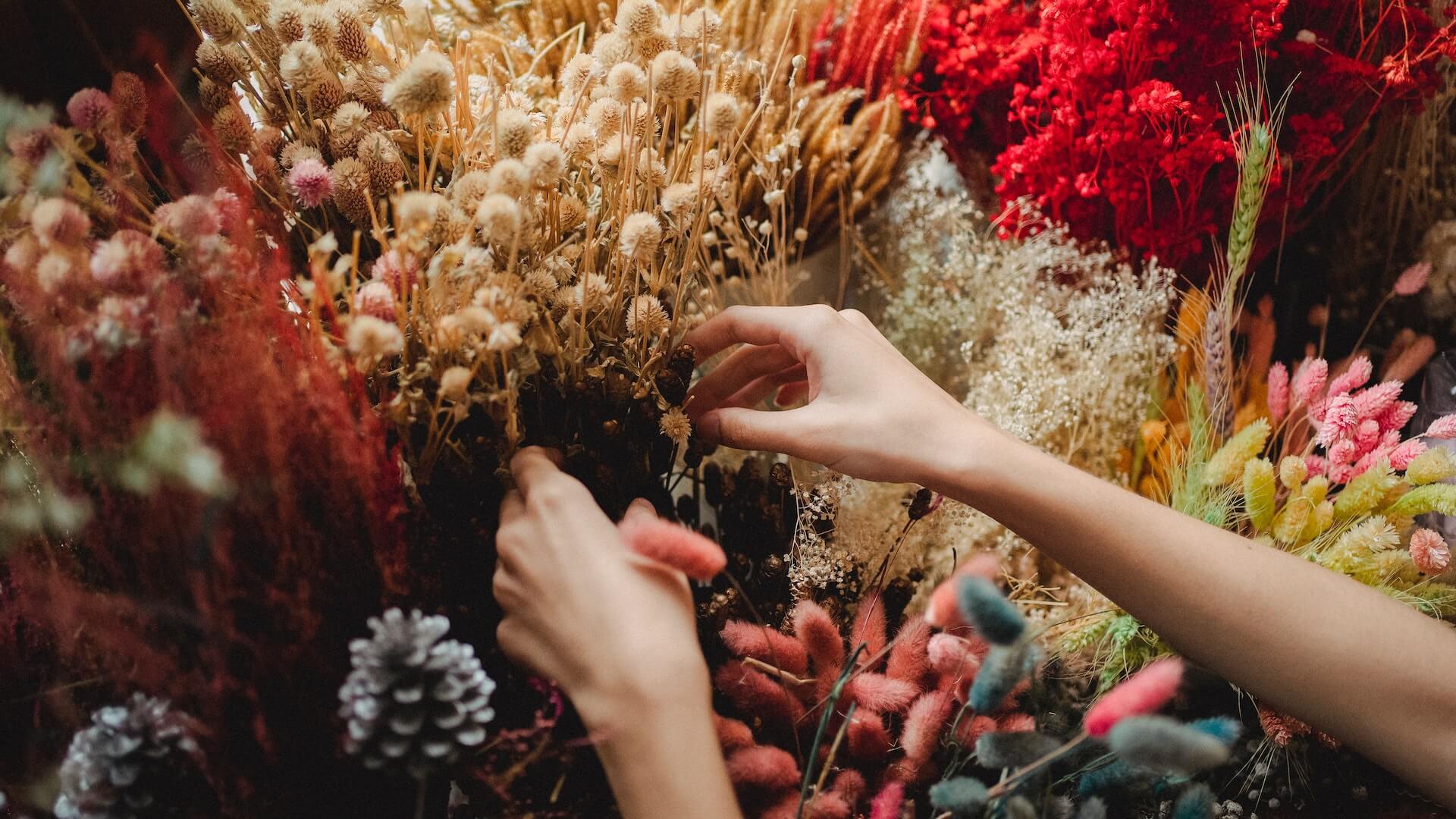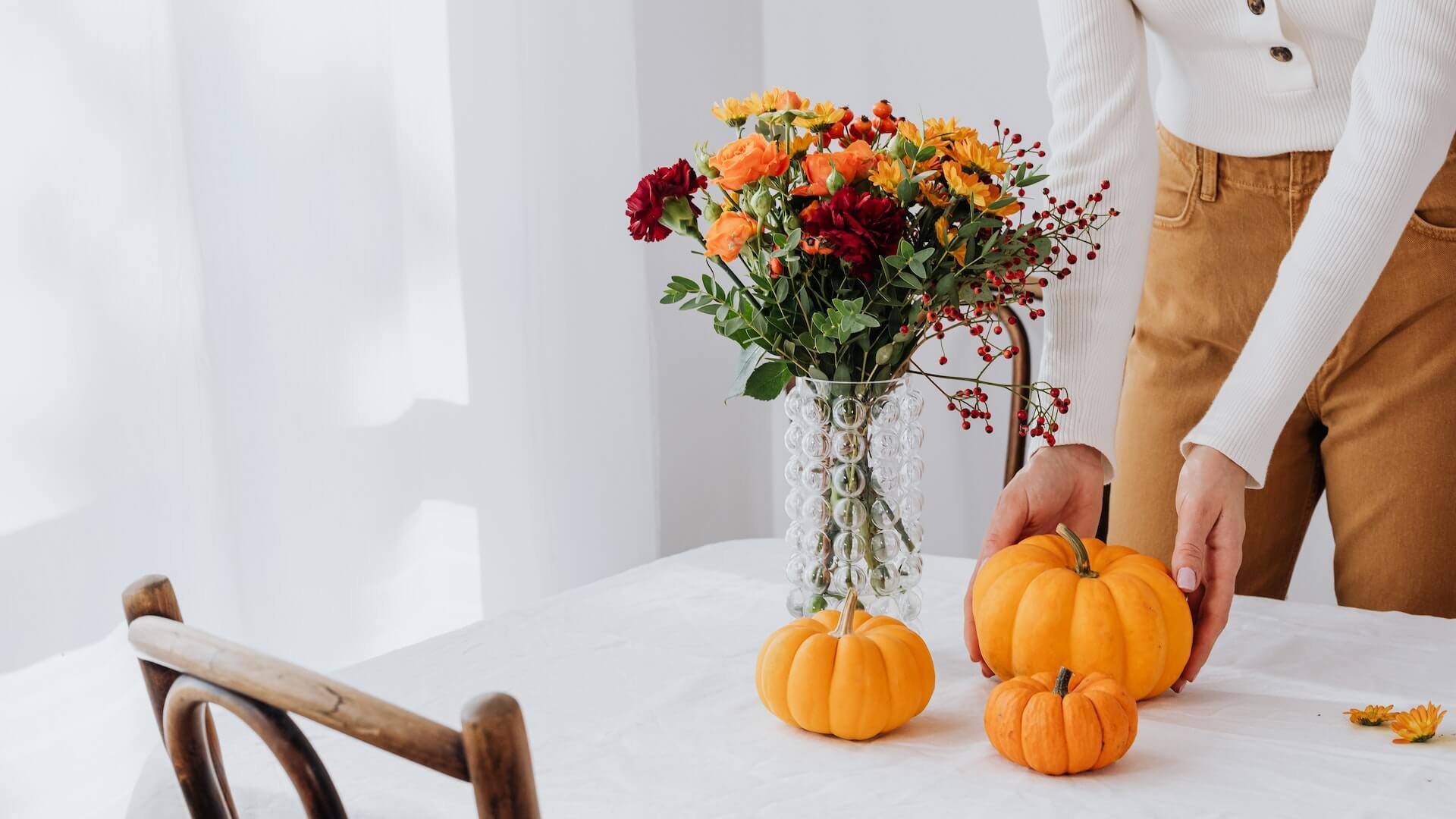Flower arranging is an art that has captivated people for centuries. From the elaborate arrangements of the Victorian era to the simple and elegant bouquets of today, flowers have always been a source of inspiration and beauty. Whether you’re looking to create a centerpiece for a special occasion or just want to brighten up your home, flower arranging can be a fun and rewarding hobby. In this post, we’re going to explore the basics of flower arranging and share some tips and tricks for creating stunning arrangements. From selecting the right flowers and vase to arranging them in a way that is visually appealing, we’ll cover everything you need to know to master the art of flower arranging. So, let’s get started!
The art of flower arranging: A brief history and its significance
Flower arranging, also known as floral design or floristry, is an ancient practice that has played a significant role in various cultures throughout history. Its roots can be traced back to ancient Egypt, where flowers were used for religious ceremonies and to adorn tombs. The art of flower arranging then spread to ancient Greece and Rome, where it became an integral part of their cultural and social events.

During the Middle Ages, flower arrangements took on symbolic meanings, often representing virtues, religious beliefs, or emotions. It was during the Renaissance period that flower arranging began to evolve as a true art form, with artists incorporating flowers into their paintings and sculptures.
In the 17th and 18th centuries, flower arranging gained popularity as a way to bring nature indoors. Elaborate floral designs were created to adorn homes, palaces, and churches, reflecting the wealth and status of the individuals or institutions hosting the arrangements.
Today, flower arranging continues to hold great significance in various cultures around the world. It is not just about creating beautiful bouquets or centerpieces; it is an art form that allows individuals to express their creativity, evoke emotions, and convey messages through the language of flowers.
Flower arranging has also become an essential aspect of events and celebrations, including weddings, funerals, and other special occasions. The choice of flowers, colors, and arrangement styles can convey different meanings and set the desired ambiance.
Mastering the art of flower arranging goes beyond arranging flowers in a vase. It involves understanding the principles of design, such as balance, proportion, and color harmony, as well as the techniques of conditioning and arranging various types of flowers and foliage.
Essential tools and materials you’ll need for flower arranging
When it comes to mastering the art of flower arranging, having the right tools and materials is essential. These items not only make the process easier but also ensure that your arrangements turn out beautifully.
First and foremost, you’ll need a good pair of floral shears or clippers. These specialized tools are designed to cut through stems cleanly, allowing for better water absorption and longer-lasting arrangements. Look for shears with sharp blades and a comfortable grip to make your job more enjoyable.
Next, having a sturdy and reliable vase or container is crucial. Choose one that complements the style of your arrangement and provides ample support for the flowers. Consider the size and shape of the container, as well as the material it’s made of. Glass vases are versatile and allow you to showcase the stems, while ceramic or metal containers can add a touch of elegance or rustic charm.
Floral foam or oasis is another essential material for flower arranging. This foam holds water and provides support for the stems, ensuring that your flowers stay hydrated and in place. Soak the foam in water before use and trim it to fit your container. This will help keep your arrangement looking fresh and vibrant for longer periods.
In addition to these basic tools and materials, consider investing in floral tape, wire, and floral preservatives. Floral tape is useful for creating grid patterns on vase openings, providing structure and stability for your arrangement. Floral wire can be used to secure fragile stems or create unique shapes and designs. Floral preservatives, on the other hand, help extend the life of your flowers by nourishing them with essential nutrients.
Understanding the different types of flowers and their meanings
Flowers have long been used to convey emotions, symbolize sentiments, and add beauty to various occasions. Each type of flower holds its own significance, making it essential to select the right blooms for your arrangement.

Roses, for example, are renowned for their romantic connotations. Red roses symbolize love and passion, while pink roses represent admiration and gratitude. On the other hand, yellow roses signify friendship and joy. Incorporating roses into your flower arrangement can evoke specific emotions and set the tone for an event or occasion.
Lilies, with their elegant and graceful appearance, are often associated with purity and innocence. White lilies symbolize purity and virtue, making them a popular choice for weddings and religious ceremonies. Calla lilies, with their unique trumpet-like shape, symbolize beauty and sophistication. By incorporating lilies into your flower arrangement, you can create an atmosphere of elegance and purity.
Sunflowers, with their vibrant yellow petals and large size, are known to symbolize happiness and positivity. These cheerful blooms can brighten any space and add a touch of warmth to your arrangement. Sunflowers are often associated with summer and are perfect for creating a lively and joyful atmosphere.
Other flowers, such as tulips, daisies, and orchids, also carry their own meanings and symbolism. Tulips symbolize perfect love and are available in a variety of colors, each with its own significance. Daisies represent innocence and simplicity, while orchids represent luxury and refinement.
Choosing the right flowers for your arrangement
Each flower brings its own unique beauty, color, and fragrance to the overall composition, and selecting a harmonious combination will elevate your arrangement to new heights.
First and foremost, consider the occasion or purpose of your arrangement. Are you creating a centerpiece for a formal event or a vibrant bouquet for a casual gathering? The theme and atmosphere you want to convey will guide your flower selection.
Next, take into account the color palette you wish to work with. Are you aiming for a monochromatic arrangement with varying shades of a single color, or do you prefer a complementary blend of contrasting hues? Think about the mood you want to create – soft and romantic, bold and vibrant, or perhaps serene and calming.
Consider the shape and size of the flowers as well. Different varieties have distinct forms, from delicate and dainty blooms to bold and architectural shapes. This will determine the overall structure and visual impact of your arrangement. Mixing various shapes and sizes can create an interesting and dynamic display.
Additionally, take note of the seasonality of the flowers you choose. Opting for blooms that are in season ensures their freshness and availability, and it adds a touch of nature’s authenticity to your arrangement. Seasonal flowers also tend to be more cost-effective.
Lastly, don’t forget about fragrance. Some flowers have a strong, sweet scent that can fill a room with their fragrance, while others are more subtle. Consider the scent you desire and how it complements the overall aesthetic of your arrangement.
Exploring various flower arranging techniques and styles
Flower arranging is an art form that allows you to express your creativity and bring beauty into any space. There are various techniques and styles that you can explore to create stunning floral arrangements that captivate and inspire.

One technique to consider is the traditional Japanese art of Ikebana. This style focuses on simplicity and minimalism, using a few carefully chosen flowers and branches to create a balanced and harmonious composition. It emphasizes the natural beauty of each individual stem and the negative space around them, creating a sense of tranquility and mindfulness.
On the other hand, the English Garden style embraces a more romantic and free-flowing approach. This style often incorporates a mix of different types of flowers and foliage, creating an abundant and lush arrangement. It aims to mimic the appearance of a wild, blooming garden and exudes a sense of natural beauty and charm.
For those looking for a more modern and contemporary feel, consider exploring the minimalist style. This style focuses on clean lines, geometric shapes, and a limited color palette. It often features bold and sculptural flowers, such as proteas or orchids, arranged in a structured and architectural manner. The minimalist style brings a sense of sophistication and elegance to any space.
Tips for creating a balanced and visually appealing flower arrangement
Creating a balanced and visually appealing flower arrangement is like composing a masterpiece. It requires a keen eye for design and an understanding of the various elements that come together to create a harmonious display. Here are some tips to help you master the art of flower arranging:
1. Select a focal point:
Choose one or a few standout blooms or foliage that will be the focal point of your arrangement. This could be a large, eye-catching flower or an interestingly shaped foliage that draws attention.
2. Consider color harmony:
Pay attention to the color scheme of your arrangement. Opt for complementary or analogous colors to create a harmonious and visually pleasing look. You can also experiment with contrasting colors for a bold and dramatic effect.
3. Play with textures:
Incorporate different textures to add depth and interest to your arrangement. Mix soft and delicate flowers with rough and spiky foliage or add in some unique elements like branches or berries for added texture and visual appeal.
4. Mind the scale and proportion:
Ensure that the size and scale of your flowers and foliage are proportionate to the size of the container or vase you are using. A general rule of thumb is to have the height of the arrangement be roughly 1.5 times the height of the container.
5. Create depth:
Add depth to your arrangement by varying the heights of the flowers and foliage. Place taller flowers towards the back and shorter ones towards the front. This will give your arrangement a three-dimensional look and make it more visually interesting.
6. Use the rule of odd numbers:
When arranging flowers, odd numbers tend to create a more natural and visually pleasing composition. So, try to work with odd numbers of flowers or groupings of foliage.
7. Don’t forget about negative space:
Negative space refers to the empty spaces between the flowers and foliage. Embrace this space as it helps to create a sense of balance and allows the eye to rest. Don’t overcrowd your arrangement; instead, let the flowers breathe and have room to shine.
Incorporating different elements such as foliage, filler flowers, and accessories
When it comes to flower arranging, it’s not just about the blooms themselves. To create a truly stunning arrangement, it’s important to incorporate different elements such as foliage, filler flowers, and accessories.

Foliage plays a crucial role in adding depth and texture to your arrangement. From delicate ferns to bold eucalyptus leaves, there are countless options to choose from. Consider using foliage with varying shapes, sizes, and colors to create contrast and visual interest. Place them strategically throughout the arrangement, allowing them to frame and enhance the blooms.
Filler flowers are the unsung heroes of flower arranging. These smaller, often more delicate blooms, are used to fill in gaps and add volume to the arrangement. They can also provide a beautiful backdrop for the main flowers. Baby’s breath, statice, and waxflower are popular choices for fillers. Experiment with different varieties to find the perfect combination that complements your blooms.
Incorporating accessories can take your flower arrangement to the next level. Accessories can include anything from decorative ribbons, feathers, or even small decorative objects that match the theme or occasion. These elements can add a touch of whimsy or elegance, depending on your desired aesthetic. Just remember to use accessories sparingly, ensuring they enhance rather than overpower the natural beauty of the flowers.
When arranging your flowers, consider the balance of these different elements. Aim for a harmonious combination that allows each element to shine while working together as a cohesive whole. Experiment with different placements and combinations until you achieve the desired effect.
Understanding color theory and its impact on floral design
The colors you choose can evoke different emotions and set the overall mood of your arrangement. By mastering the art of color selection, you can take your flower arranging skills to the next level.
Firstly, it’s essential to familiarize yourself with the color wheel. This tool will help you understand the relationships between different colors and how they can be combined harmoniously. The color wheel consists of primary colors (red, blue, and yellow), secondary colors (orange, green, and purple), and tertiary colors (a mix of primary and secondary colors).
Each color on the wheel has its own unique characteristics and associations. For instance, warm colors like red, orange, and yellow are energetic and eye-catching, while cool colors like blue, green, and purple create a sense of calm and tranquility. Understanding these characteristics will help you create arrangements that convey the desired atmosphere or message.
Another important aspect of color theory is understanding color schemes. These are predetermined combinations of colors that work well together. Some popular color schemes include complementary (colors opposite each other on the color wheel), analogous (colors adjacent to each other), and monochromatic (different shades and tints of a single color). Experimenting with different color schemes will allow you to create arrangements that are visually pleasing and visually impactful.
Consider the occasion or theme of your arrangement when selecting colors. For romantic arrangements, reds and pinks are often used to symbolize love and passion. For a fresh and vibrant spring arrangement, opt for pastel shades of pink, yellow, and purple. By understanding the meaning and symbolism behind different colors, you can create arrangements that communicate a specific message or evoke a particular feeling.
Step-by-step guide to creating a stunning flower arrangement
Creating a stunning flower arrangement is a delightful and rewarding experience. With a step-by-step guide, you can master the art of flower arranging and bring beauty into any space.
Step 1: Gather your materials
Start by gathering all the necessary materials for your flower arrangement. This includes a vase or container of your choice, floral foam or a frog to hold the stems in place, floral tape, scissors, and of course, a variety of fresh flowers and greenery.
Step 2: Prepare the vase
Prepare your vase by cleaning it thoroughly and filling it with fresh water. If you are using floral foam, soak it in water until it is fully saturated. This will help keep your flowers hydrated and ensure their longevity.
Step 3: Trim and arrange greenery
Begin by trimming any excess leaves or thorns from your greenery. This will create a clean and polished look for your arrangement. Place the greenery in the vase, starting with larger and taller pieces towards the back and shorter ones towards the front. This will create a base and add depth to your arrangement.
Step 4: Add focal flowers
Choose your focal flowers, which are typically larger and more eye-catching blooms. Trim the stems at an angle and insert them into the vase at varying heights. Place them strategically to create a focal point or focal points in your arrangement.
Step 5: Fill in with secondary flowers
Next, add your secondary flowers to complement the focal blooms. These can be smaller and more delicate flowers that add texture and fill out the arrangement. Place them evenly throughout the vase, filling in any gaps and creating a balanced composition.
Step 6: Incorporate accent flowers
Accent flowers, such as sprigs of baby’s breath or small buds, can add a touch of whimsy or elegance to your arrangement. Insert them strategically to enhance the overall design and bring additional visual interest.
Step 7: Check for balance and symmetry
Step back and assess your arrangement from different angles. Ensure that it is balanced and symmetrical, with no empty spaces or overcrowding. Make any necessary adjustments to achieve a visually pleasing result.
Step 8: Add the finishing touches
Once you are satisfied with the arrangement, take a moment to remove any stray leaves or stems that may be visible. Give the flowers a gentle misting with water to keep them fresh and vibrant.
Step 9: Display and enjoy
Find the perfect spot to display your stunning flower arrangement. Whether it’s a centerpiece for a dining table, a welcoming addition to an entryway, or a gift for a loved one, your creation is sure to bring joy and beauty to any space.
Caring for your floral creations and making them last longer
Once you’ve created a stunning floral arrangement, it’s important to know how to care for it to ensure its longevity. With a little extra attention, you can enjoy the beauty and fragrance of your flowers for an extended period of time.

1. Watering:
The key to preserving your flower arrangement is proper hydration. Check the water level in your vase daily and replenish it as needed. To maintain freshness, change the water every two to three days, ensuring it is clean and free from any debris or bacteria.
2. Trimming:
Trim the stems of your flowers every few days, about half an inch from the bottom. This allows for better water absorption and prevents the growth of bacteria that can shorten the lifespan of your arrangement. Use sharp, clean scissors or shears to make a clean cut at a 45-degree angle.
3. Placement:
Choose a suitable location for your floral creation. Keep it away from direct sunlight, heat sources, and drafts, as these can accelerate the wilting process. A cool room with indirect light is ideal for preserving the freshness of your blooms.
4. Remove wilting flowers:
As flowers naturally age, some may begin to wilt. Remove these flowers from the arrangement promptly to prevent the spread of ethylene gas, which can cause neighboring flowers to deteriorate more quickly.
5. Flower food:
Utilize the flower food packets that often come with store-bought bouquets. These packets contain essential nutrients that help prolong the life of your flowers. Follow the instructions carefully and add the appropriate amount of flower food to your vase water.
6. Mist and hydration:
For especially delicate flowers, misting them with water can help maintain their hydration. Additionally, you can gently spritz the petals with water to rejuvenate any wilting blooms.
Conclusion
Flowers have the power to bring beauty, joy, and a touch of elegance to any space. With the tips and techniques shared in this article, you can elevate your flower arranging skills to create stunning arrangements that will impress any guest. Whether you’re a beginner or have some experience in floral design, we hope our insights inspire you to explore your creativity and create breathtaking displays that will brighten up your home or events. Happy arranging!



